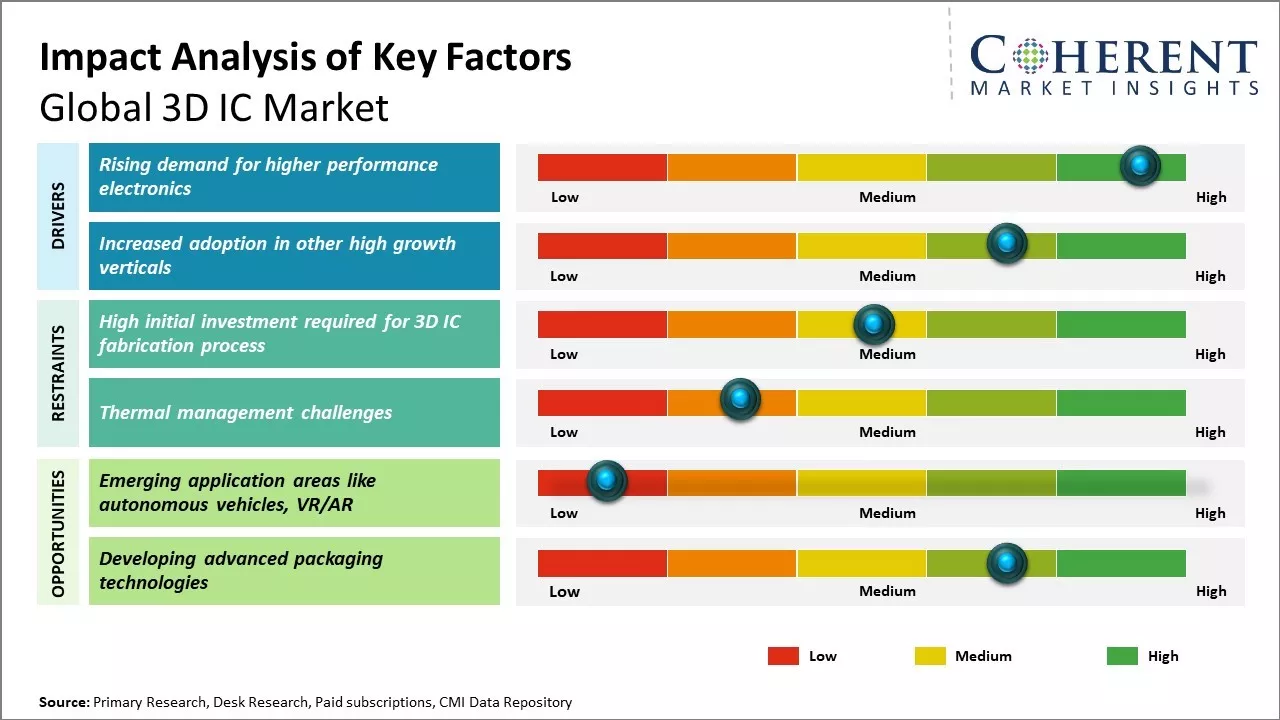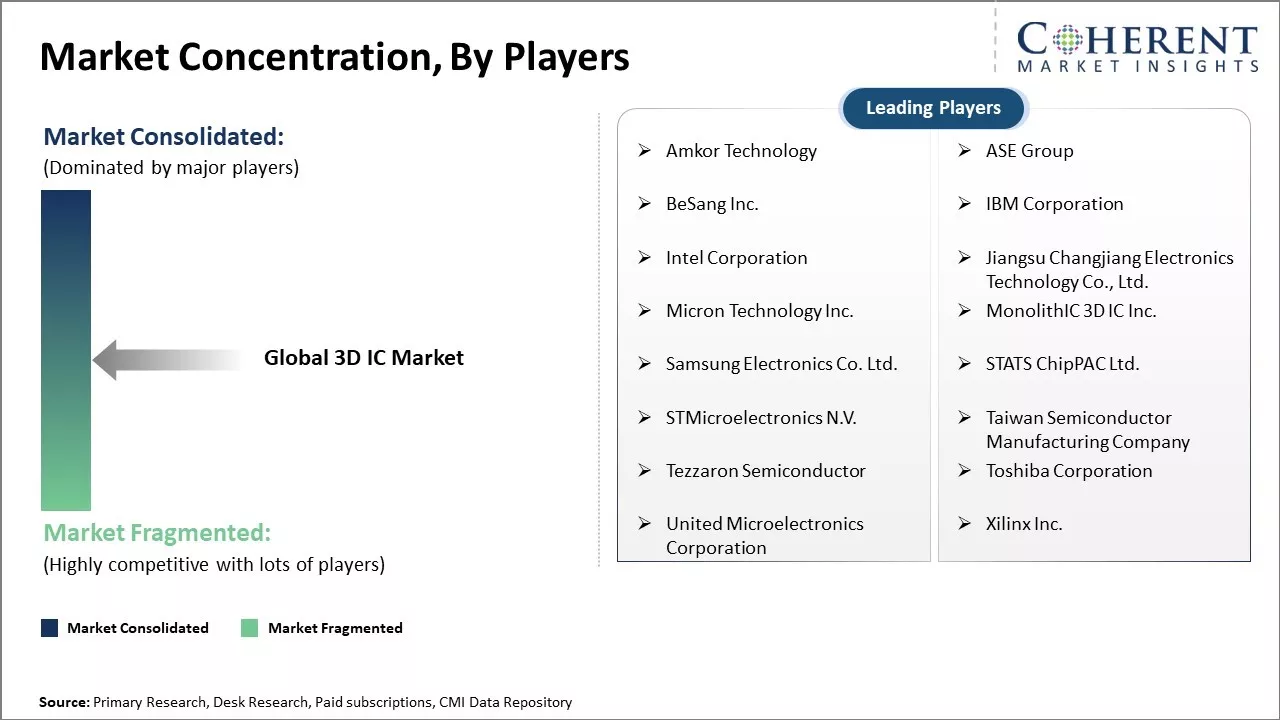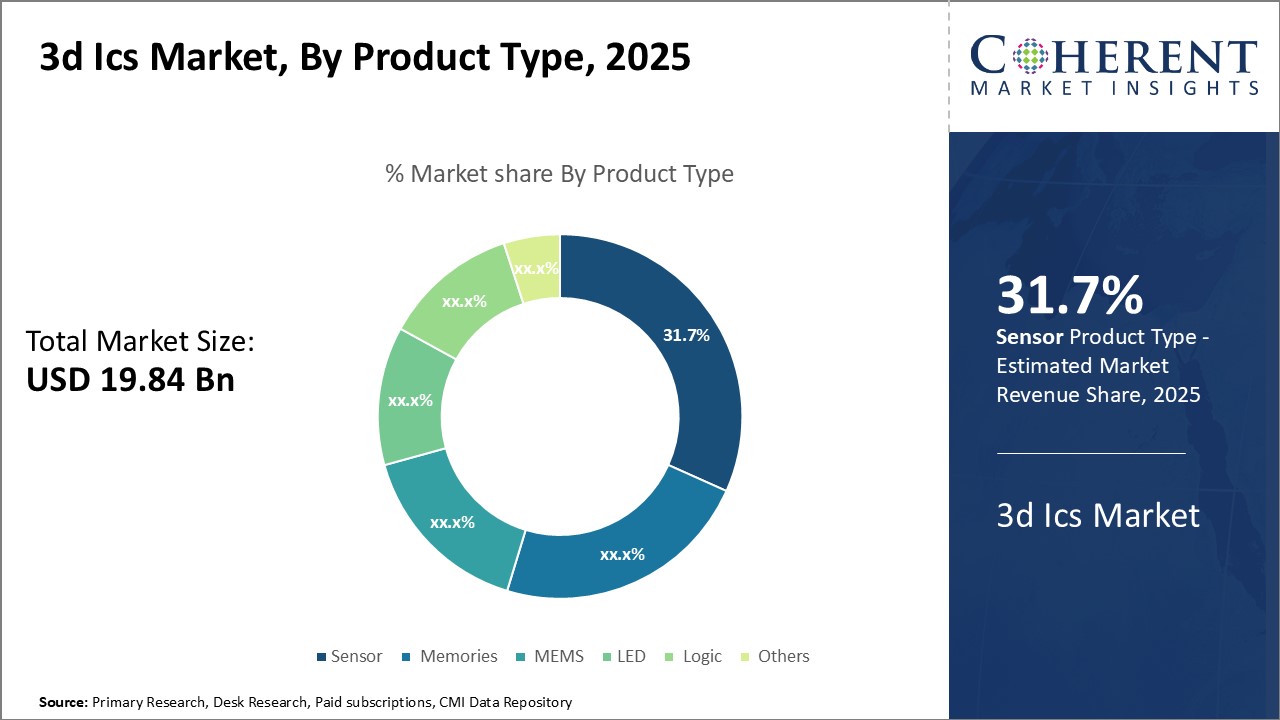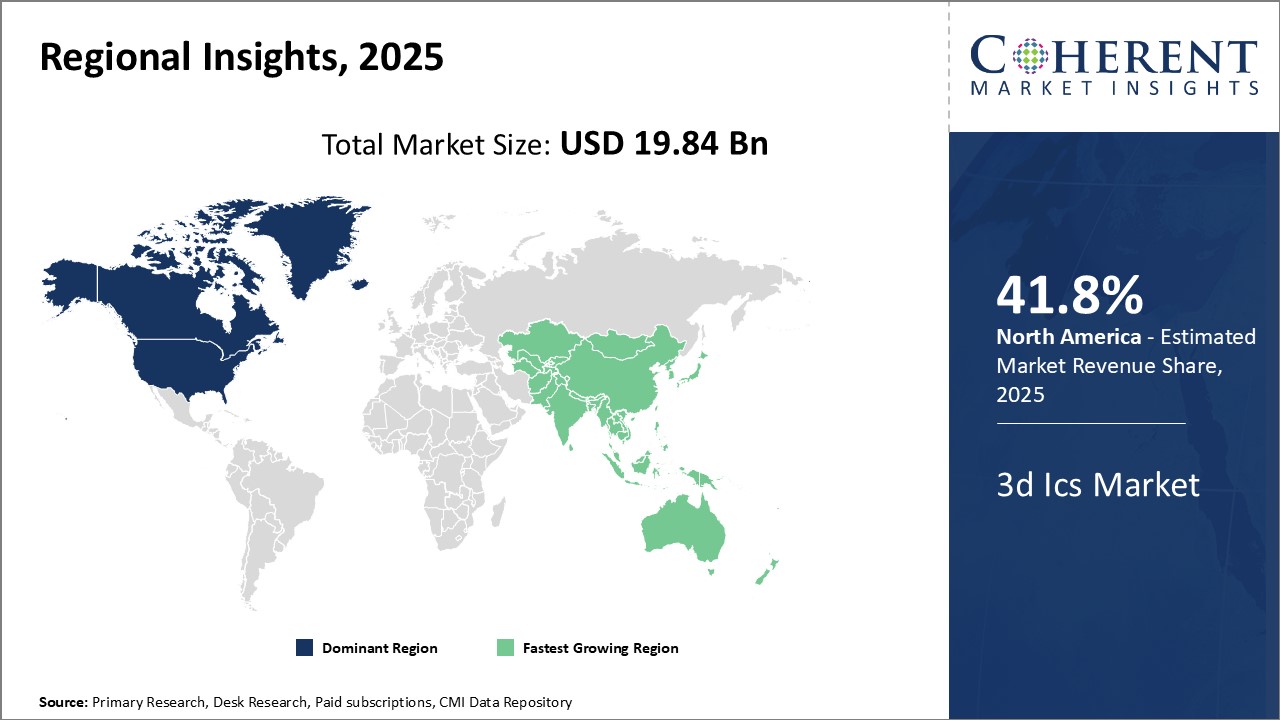The global 3D ICs market is estimated to be valued at US$ 19.84 Bn in 2025 and is expected to reach US$ 73.66 Bn by 2032, exhibiting a compound annual growth rate (CAGR) of 20.6% from 2025 to 2032.

Discover market dynamics shaping the industry: Download Free Sample
The 3D ICs market is expected to witness robust growth over the forecast period. The miniaturization of semiconductor chips and the need for greater functionality with smaller form factor is expected to drive the demand for 3D ICs technology. 3D ICs help in overcoming challenges faced by traditional 2D scaling by enabling thinner chips, more functional capabilities and better performance. With growing demand for smart and connected devices across industries, stacked die and 3D ICs market will continue gaining prominence. The increasing penetration of 3G/LTE connectivity in mobile devices also supplements the need for higher functional integrated circuits (ICs) integrating memory and logic chips in a single package utilizing 3D ICs technology.
Rising demand for higher performance electronics
The demand for higher performance and more powerful consumer electronics such as smartphones, tablets, and other handheld devices has been growing rapidly in recent years. Users expect their devices to deliver more processing power and memory capacity to support applications such as high-resolution graphics, virtual reality, and mobile gaming. At the same time, there is constant pressure on device manufacturers to make devices thinner, lighter and more power efficient. Integrating more transistors in a traditional 2D chip design is becoming increasingly difficult due to physical and electrical interference limitations. 3D ICs technology allows stacking of multiple silicon wafers or die and facilitates vertical integration of different components such as RAM, graphics, wireless, and processing. This significantly increases the area available for circuitry and helps accommodate many more transistors and features in the same footprint. It also reduces distances between different components, resulting in improved speed and lower power consumption. Many top manufacturers of mobile processors and graphics chips have already started adopting 3D ICs design and manufacturing to deliver next generation devices with enhanced capabilities. Going forward, as consumer demands for even faster and more powerful yet energy efficient devices increase, 3D ICs is expected to play a bigger role in fulfilling those needs.
For instance, in September 2022, STMicroelectronics, a U.K.-based company, introduced a sophisticated VDA-compliant LIN alternator regulator designed to enhance the performance and adaptability of 12V automotive systems. This advanced regulator, known as the L9918, leverages a 3D ICs and improved functionality to ensure the reliability of 12V automotive systems. The L9918 allows users to customize settings such as alternator characteristics and voltage set points.

Get actionable strategies to beat competition: Download Free Sample
Increased adoption in other high growth verticals
While 3D ICs technology was initially utilized primarily in consumer electronics, its use is spreading to other verticals experiencing fast growth such as automotive, industrial equipment, and healthcare that require highly integrated and customized solutions. Autonomous and electric vehicles need sophisticated processing power and sensory capabilities to support functions such as computer vision, navigation, connected features and predictive maintenance. 3D stacking allows integrating different sensors, memory, control, and processing systems in the limited space available. Industrial equipment makers are exploring 3D designs to fulfill requirements for analytics-ready modular products. Medical devices would benefit from the technology's ability to integrate various lab-on-chip and microfluidic operations that empower applications like organ-on-chip models and point-of-care diagnostics. Governments and organizations worldwide are focusing on initiatives that support the research and development of customized 3D integrated solutions for strategic sectors. This expands the addressable market for 3D ICs beyond consumer devices and is driving greater attention and investments towards the technology from both private companies as well as public institutions.
Key Takeaways from Analyst:
The global 3D ICs market is poised to grow significantly over the next decade driven by the increasing demand for highly integrated semiconductor solutions across diverse industry verticals. The need for miniaturization of electronics and higher performance is prompting chip manufacturers to adopt 3D integration technologies at a rapid pace. Advancements in Through-Silicon Via (TSV) and wafer bonding techniques have also removed major roadblocks, making 3D ICs a commercially viable solution.
The automotive and mobile computing industries offer huge opportunities for 3D ICs as the demand for advanced driver-assistance systems and powerful yet energy-efficient processors and memory solutions grow exponentially. Cutting-edge applications like IoT (Internet of Things), AI (Artificial Intelligence) and big data will further catalyze adoption. However, higher manufacturing costs and complexity continue to restrain full market potential currently.
Overall, 3D integration is fast becoming the fabrication method of choice for developing sophisticated next-generation chips needed across diverse industries. While technical and cost challenges remain, the long-term market outlook for 3D ICs appears very promising.
Market Challenges: High initial investment required for 3D ICs fabrication process
The high initial investment required for setting up 3D ICs fabrication facilities represents a major challenge for the growth of the global 3D ICs market. Developing production capabilities for 3D ICs technology demands massive capital expenditures for sophisticated manufacturing equipment and cleanroom infrastructure.
The high capital costs are predominantly driven by equipment needs for 3D ICs manufacturing. Advanced lithography tools for precise stacking and bonding of dies are some of the most expensive machineries required. Additionally, meeting stringent process control and contamination requirements of 3D ICs fabrication demands considerable cleanroom space. Infrastructure requirements such as air handling systems equipped with HEPA (High-Efficiency Particulate Air) filters and redundant utilities like gases and liquids also contribute hugely to the investments needed. Furthermore, costs related to hiring and training specialized workforces to operate complex 3D ICs fabs also add to the expenses.
Market Opportunities: Emerging application areas like autonomous vehicles, VR/AR
Emerging technologies like autonomous vehicles and augmented reality/virtual reality are opening up significant growth opportunities for the global 3D ICs market going forward. Autonomous vehicles require an enormous amount of computing power and data processing capabilities to power all their sensors, cameras, and technology that allow for navigation and driving without human intervention. 3D chip stacking helps meet the demands of autonomous vehicles by enabling more components and functionality to be packed into a smaller space utilizing vertical layers of silicon. This helps overcome limitations of traditional planer chips and allows auto manufacturers to integrate powerful processing, memory, and graphics capabilities in a small form factor suitable for vehicles.
Virtual and augmented reality are also computing and bandwidth intensive technologies that can hugely benefit from the performance and efficiency gains delivered by 3D ICs. By stacking reams of sensors, logic, memory and other chips vertically on top of each other instead of merely side by side, 3D ICs help maximize available space and speed up communications between different components critical for immersive VR and AR experiences.

Discover high revenue pocket segments and roadmap to it: Download Free Sample
Insights By Product Type - Emerging technologies are driving sensor adoption
In terms of product type, sensor is expected to contribute 31.7% share in 2025 of the market owing to burgeoning demand in industries like automotive, healthcare, and consumer electronics. Revolutionary innovations in sensor technologies are enabling finer detection abilities compared to past generations. Advanced microelectromechanical systems (MEMS) sensors are finding widespread usage, from motion detectors in wearables to pressure monitors in medical devices. The miniaturization afforded by 3D designs allows multi-sensing capabilities in compact form factors. This has spurred the uptake of 3D ICs integrated sensor packages across more applications. Additionally, the Internet of Things (IoT) revolution is triggering explosive growth in connected devices and systems that employ diverse types of sensors for functions like environmental monitoring, movement tracking, and intelligent control. Going forward, further breakthroughs expanding sensing performance at lower production costs will sustain the momentum around sensors driving the 3D ICs market growth.
Insights By Substrate Type - Spurring performance through silicon on insulator
In terms of substrate type, Silicon on Insulator (SOI) is expected to contribute 51.9% share in 2025 of the market owing to its proven ability to amplify chip functionality and scalability. SOI substrates help overcome limitations of conventional bulk silicon by reducing parasitic device capacitance and leakage currents. This facilitates higher speeds, lower power consumption and better reliability in cutting-edge ICs. The technology becomes increasingly pertinent for sophisticated 3D designs incorporating tens or hundreds of active layers in compact depths. SOI also eases fabrication complexities as it enables full chip isolation. Such merits have made SOI substrates ubiquitous for developing high-performance computing, 5G communications, and augmented/virtual reality hardware relying on intricate 3D stacking designs. Continuous SOI R&D focusing on lowered production costs while retaining performance differentiation versus bulk materials will sustain its premium position within the 3D ICs substrate segment.
Insights By Application - Expanding digital landscapes are fueling the consumer electronics growth
In terms of application, consumer electronics is expected to contribute 38.6% share in 2025 of the market owing to the proliferating adoption of smart personal gadgets globally. Today's smartphones, tablets, wearables, and other consumer devices demand seamless connectivity, powerful multimedia capabilities, and personalized AI features. 3D ICs designs playing to strengths like system-on-chip miniaturization are fulfilling such needs by integrating diverse logic, memory and processing components into tightly packed footprints with lower energy usage. Likewise, rapid evolution of high-bandwidth 5G and smart home technologies will broaden possibilities for revolutionary immersive experiences, sensor-driven experiences and connectivity options delivered through displays, speakers, and interfaces optimized for 3D architectures. As consumers' digital lifestyles continue scaling new frontiers, electronics brands will resort increasingly to advanced 3D solutions to drive innovation amid competition. This augurs well for ongoing expansion in consumer segment revenues within the overall 3D ICs sphere.

Need a Different Region or Segment? Download Free Sample
North America has established itself as the dominant region in the global 3D ICs market. The region is expected to account for 41.8% of the market share. The presence of major technology companies such as Intel, Qualcomm, AMD, and Xilinx have driven significant R&D investments in the region over the years. These companies recognizing the critical role of 3D ICs technology in advancing performance and power efficiency of semiconductor devices have established large scale manufacturing and packaging facilities. The developed nature of end-use industries like automotive, consumer electronics, and data centers have also created a steady demand for advanced IC solutions. Furthermore, the large defense budget and initiatives like Made in America have rendered government support for the domestic 3D ICs industry. As a result, North American companies today account for the majority of global revenues and also lead in the development of new 3D ICs technologies such as Monolithic 3D and 2.5D.
The Asia Pacific region has emerged as the fastest growing market for 3D ICs globally. Countries like China, with its massive domestic market and policy support for developing self-reliance in semiconductor industry, has ramped up investments at a frenetic pace. Led by companies like Semiconductor Manufacturing International Corporation (SMIC), Huawei, and Unisoc, China aims to enhance its capabilities across the 3D ICs value chain from design to packaging. Other nations in the region including South Korea, Taiwan, and Singapore are also aggressively expanding their electronics manufacturing capacities involving 3D ICs. The vibrant startup environment and investments from global foundries have strengthened the region's technology prowess. Coupled with the proximity to huge consumer-base, Asia Pacific offers a compelling value proposition for scaling 3D ICs implementations. This makes it an attractive manufacturing and outsourcing destination for companies to compete and grow their presence in the largest semiconductor marketplace.
3D ICs Market Report Coverage
| Report Coverage | Details | ||
|---|---|---|---|
| Base Year: | 2024 | Market Size in 2025: | USD 19.84 Bn |
| Historical Data for: | 2020 To 2024 | Forecast Period: | 2025 To 2032 |
| Forecast Period 2025 to 2032 CAGR: | 20.6% | 2032 Value Projection: | USD 73.66 Bn |
| Geographies covered: |
|
||
| Segments covered: |
|
||
| Companies covered: |
Amkor Technology, ASE Group, BeSang Inc., IBM Corporation, Intel Corporation, Jiangsu Changjiang Electronics Technology Co., Ltd., Micron Technology Inc., MonolithIC 3D ICs Inc., Samsung Electronics Co. Ltd., STATS ChipPAC Ltd., STMicroelectronics N.V., Taiwan Semiconductor Manufacturing Company, Tezzaron Semiconductor, Toshiba Corporation, United Microelectronics Corporation, and Xilinx Inc. |
||
| Growth Drivers: |
|
||
| Restraints & Challenges: |
|
||
Uncover macros and micros vetted on 75+ parameters: Get instant access to report
*Definition: The global 3D ICs market consists of companies that design, develop, and manufacture advanced three-dimensional integrated circuits (3D ICs) which integrate several active electronic components in three dimensions. This allows the mounting of separate silicon substrates or integrated circuits piled on top of each other and connected using 3D packaging technologies including via interconnects. 3D ICs help address the limitations of traditional 2D silicon technology by increasing circuit density and performance while also reducing power consumption. The global 3D ICs market is expected to grow significantly as 3D integration becomes more important for applications such as smartphones, laptops, data centers, and high-performance computing systems.
Share
Share
About Author
As an accomplished Senior Consultant with 7+ years of experience, Pooja Tayade has a proven track record in devising and implementing data and strategy consulting across various industries. She specializes in market research, competitive analysis, primary insights, and market estimation. She excels in strategic advisory, delivering data-driven insights to help clients navigate market complexities, optimize entry strategies, and achieve sustainable growth.
Missing comfort of reading report in your local language? Find your preferred language :
Transform your Strategy with Exclusive Trending Reports :
Frequently Asked Questions
Joining thousands of companies around the world committed to making the Excellent Business Solutions.
View All Our Clients